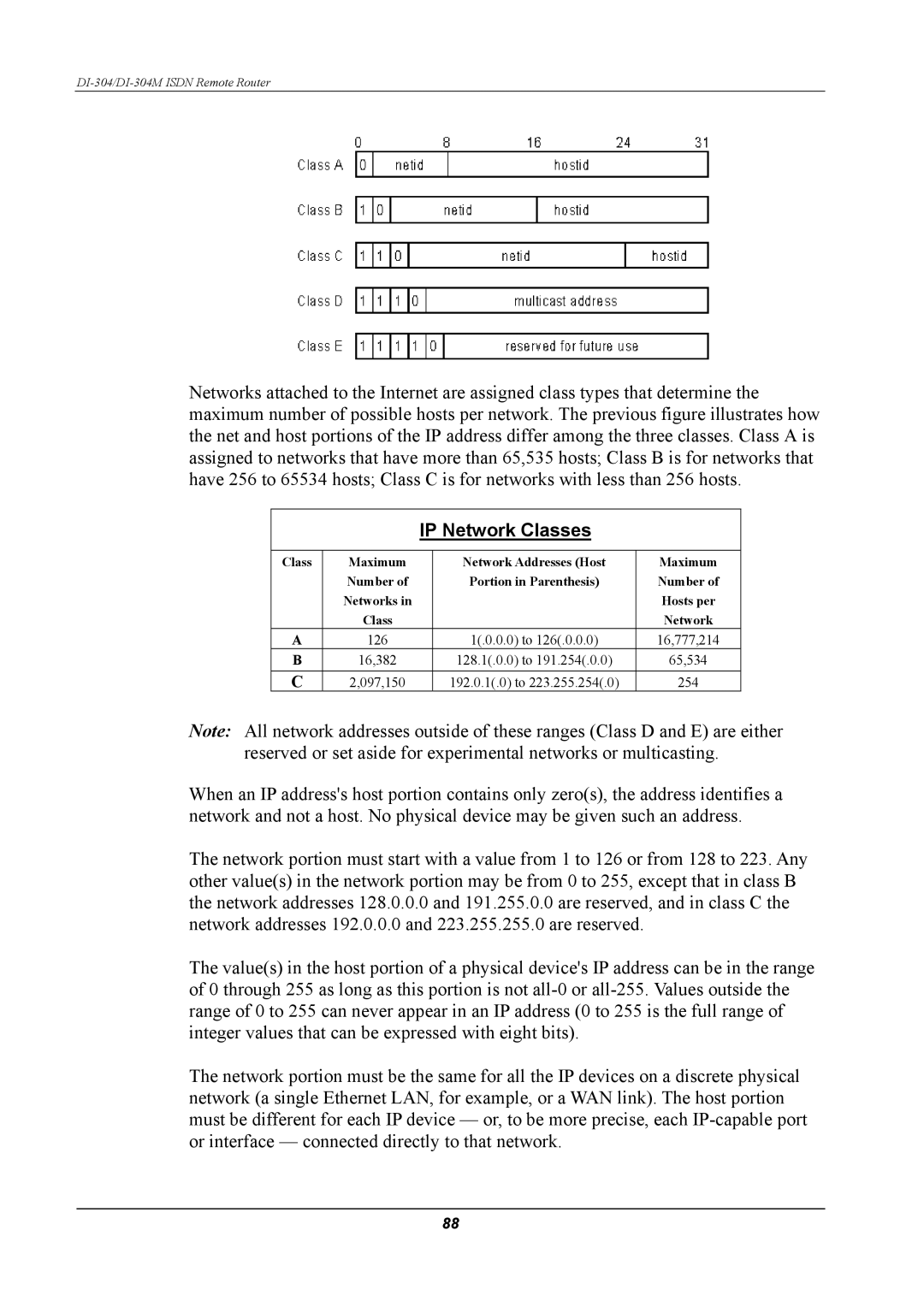
DI-304/DI-304M ISDN Remote Router
Networks attached to the Internet are assigned class types that determine the maximum number of possible hosts per network. The previous figure illustrates how the net and host portions of the IP address differ among the three classes. Class A is assigned to networks that have more than 65,535 hosts; Class B is for networks that have 256 to 65534 hosts; Class C is for networks with less than 256 hosts.
IP Network Classes
Class | Maximum | Network Addresses (Host | Maximum |
| Number of | Portion in Parenthesis) | Number of |
| Networks in |
| Hosts per |
| Class |
| Network |
A | 126 | 1(.0.0.0) to 126(.0.0.0) | 16,777,214 |
B | 16,382 | 128.1(.0.0) to 191.254(.0.0) | 65,534 |
C | 2,097,150 | 192.0.1(.0) to 223.255.254(.0) | 254 |
Note: All network addresses outside of these ranges (Class D and E) are either reserved or set aside for experimental networks or multicasting.
When an IP address's host portion contains only zero(s), the address identifies a network and not a host. No physical device may be given such an address.
The network portion must start with a value from 1 to 126 or from 128 to 223. Any other value(s) in the network portion may be from 0 to 255, except that in class B the network addresses 128.0.0.0 and 191.255.0.0 are reserved, and in class C the network addresses 192.0.0.0 and 223.255.255.0 are reserved.
The value(s) in the host portion of a physical device's IP address can be in the range of 0 through 255 as long as this portion is not
The network portion must be the same for all the IP devices on a discrete physical network (a single Ethernet LAN, for example, or a WAN link). The host portion must be different for each IP device — or, to be more precise, each
88
